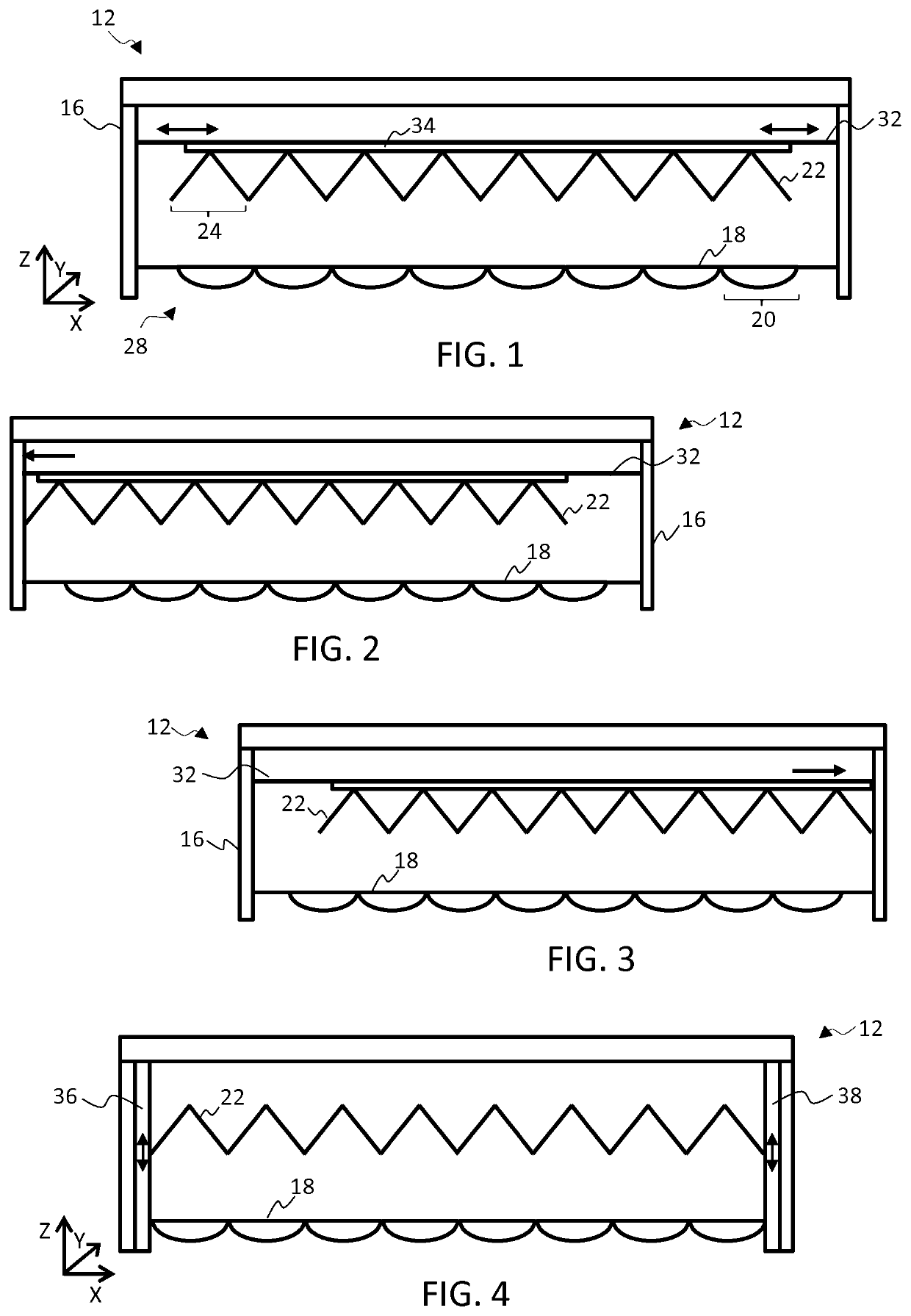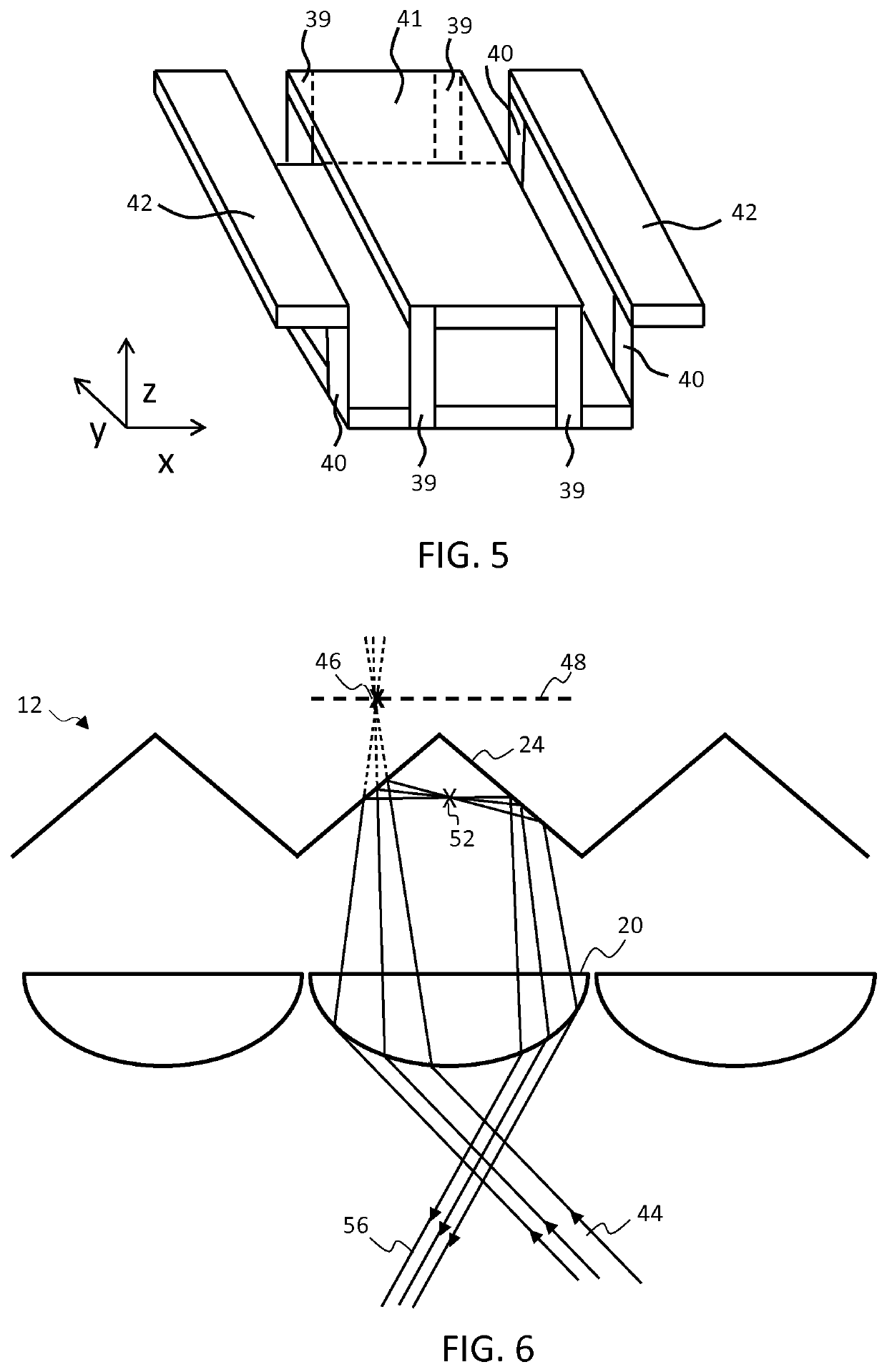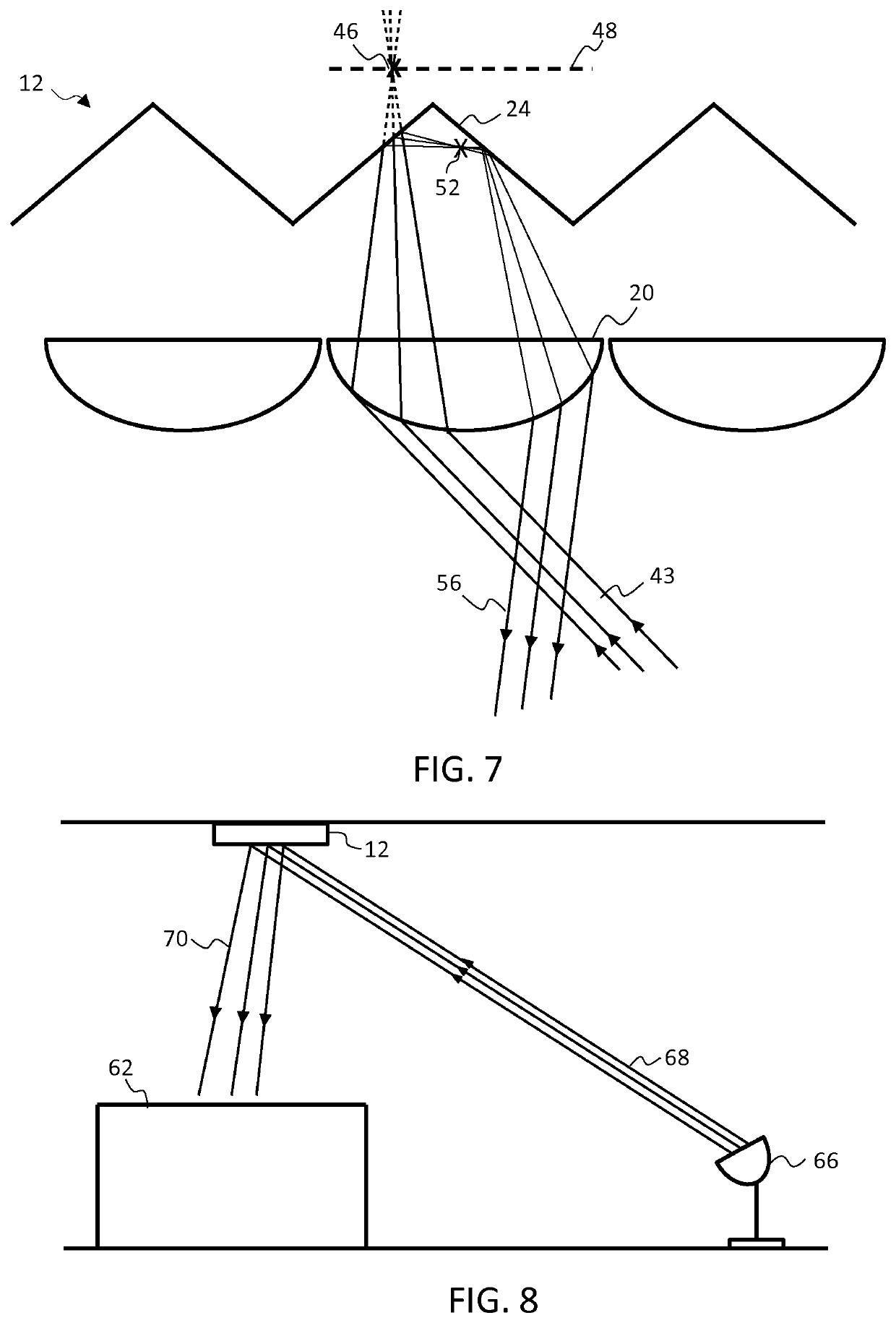Optical arrangement, lighting system and illumination method
a technology of optical arrangement and lighting system, applied in the direction of lighting and heating equipment, semiconductor devices for light sources, instruments, etc., can solve the problems of inability to independently control the level or intensity of light provided to each desk or workstation, and high installation cost of troffer-based lighting systems. , to achieve the effect of avoiding mains supply, facilitating installation, and simplifying the installation process
- Summary
- Abstract
- Description
- Claims
- Application Information
AI Technical Summary
Benefits of technology
Problems solved by technology
Method used
Image
Examples
Embodiment Construction
[0068]It should be understood that the Figures are merely schematic and are not drawn to scale. It should also be understood that the same reference numerals are used throughout the Figures to indicate the same or similar parts.
[0069]The invention provides an optical arrangement for illuminating a region within a space comprising a reflector array and lens array having an adjustable relative displacement. Each lens of the lens array is arranged to receive light from a first location within the space and to direct it onto one of the reflectors of the reflector array. Each lens is further configured to receive light reflected back from the reflector array and redirect it toward a second location within the space. By adjusting the relative displacement between the two arrays, the position of the second location can be configured.
[0070]FIG. 1 schematically illustrates a cross-sectional view through a first example optical arrangement 12 in accordance with one or more embodiments of the ...
PUM
 Login to View More
Login to View More Abstract
Description
Claims
Application Information
 Login to View More
Login to View More - R&D
- Intellectual Property
- Life Sciences
- Materials
- Tech Scout
- Unparalleled Data Quality
- Higher Quality Content
- 60% Fewer Hallucinations
Browse by: Latest US Patents, China's latest patents, Technical Efficacy Thesaurus, Application Domain, Technology Topic, Popular Technical Reports.
© 2025 PatSnap. All rights reserved.Legal|Privacy policy|Modern Slavery Act Transparency Statement|Sitemap|About US| Contact US: help@patsnap.com



